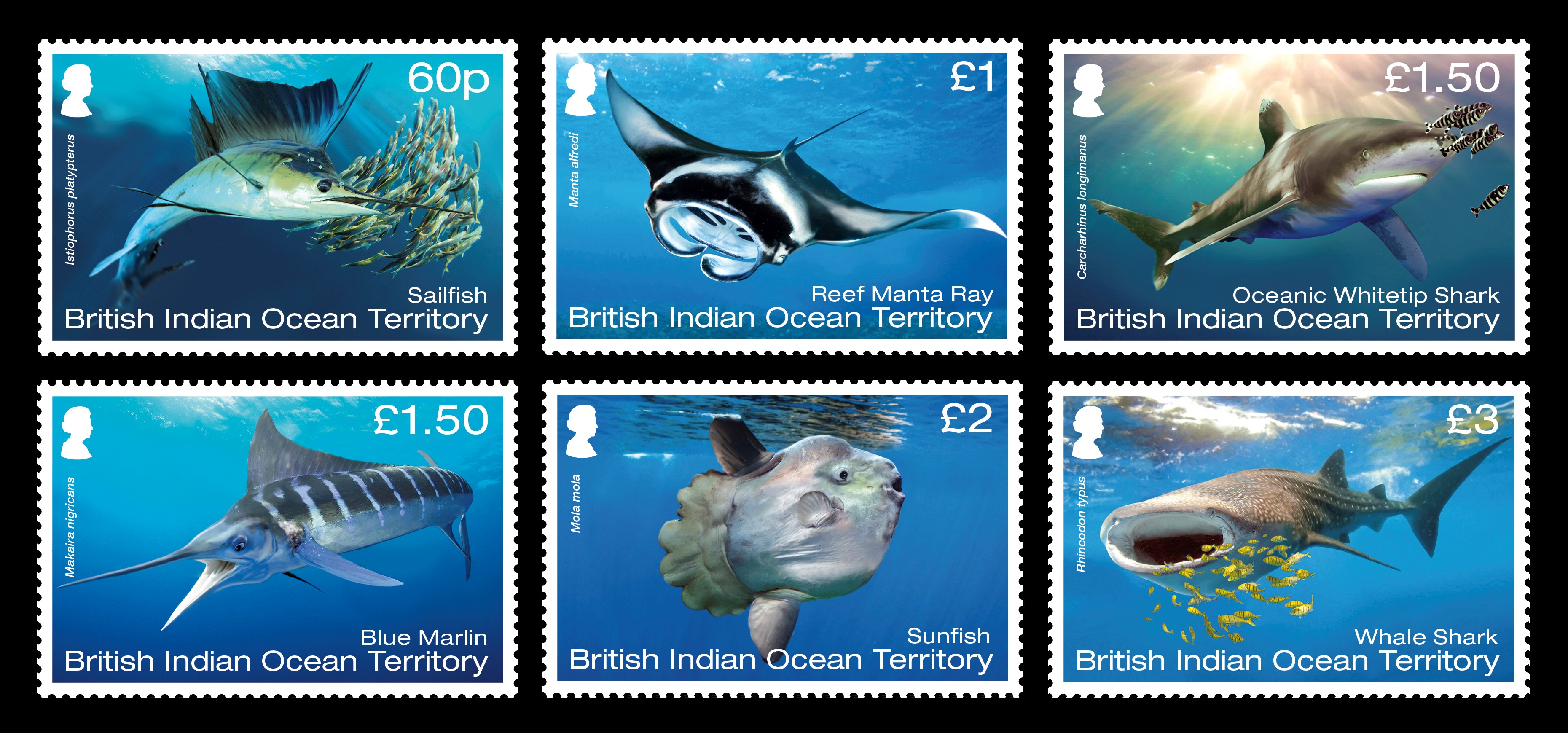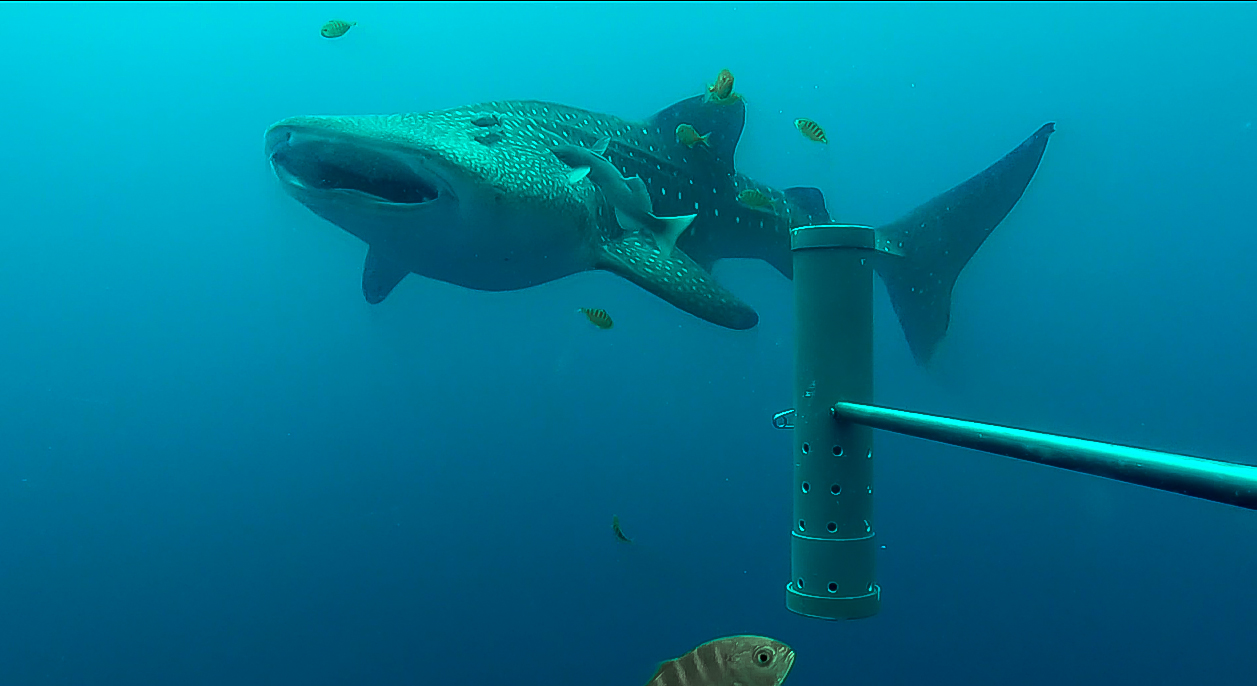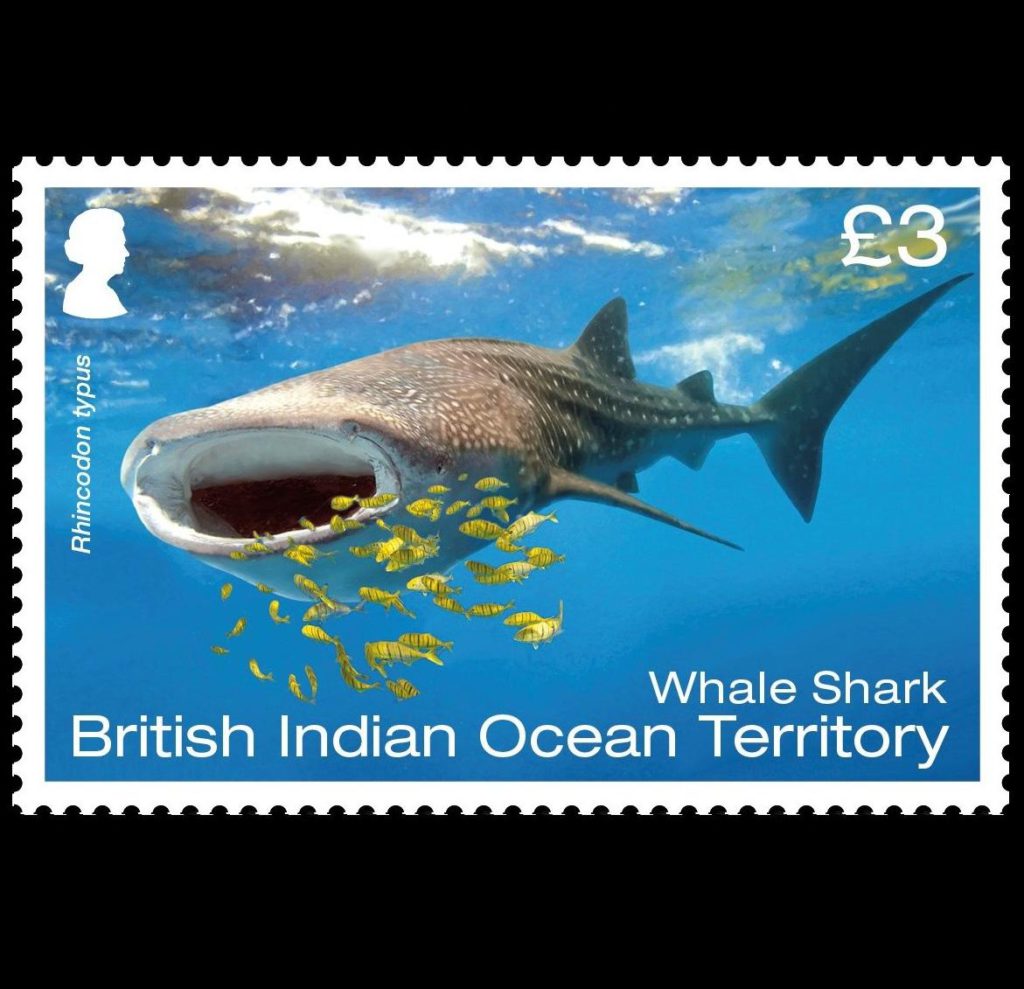BIOT Megafauna Stamp Issue 08.06.17
On 8 June 2017 the British Indian Ocean Territory Administration is releasing a set of six stamps and a first day cover portraying marine megafauna: species that are all found in the Territory.
The fish featured in this issue are:
- Sailfish Istiophorus platypterus (60p)
- Reef Manta Ray Manta alfredi (£1)
- Oceanic Whitetip Shark Carcharhinus longimanus (£1.50)
- Blue Marlin Makaira nigricans (£1.50)
- Sunfish Mola mola (£2)
- Whale Shark Rhincodon typus (£3)

You can buy these stamps and their First Day Covers online from the BIOT Post Office:
Sailfish http://www.iucnredlist.org/details/170338/0 LC
The sailfish is capable of tremendous bursts of speed over short distances, making it one of the fastest of all fish species. They are opportunistic predators and hunt fish, crustaceans and cephalopods, mostly in the form of schooling fish, which they herd into a bait-ball.
It is categorised on the IUCN Red List as of Least Concern.
Reef Manta Ray http://www.iucnredlist.org/details/195459/0 VU
The reef manta ray is a graceful swimmer but can also swim at rapid speeds, with individuals on occasion leaping out of the water, landing back with a loud slap. They can perform several of these jumps in succession which could be to remove parasites, escape a predator, communicate with other individuals, or even be a form of play.
It is categorised on the IUCN Red List as Vulnerable.
Oceanic Whitetip Shark http://www.iucnredlist.org/details/39374/0 VU
The oceanic whitetip shark suffers greatly from fishing pressure, with large numbers being caught as bycatch by tuna and other pelagic fisheries. The shark’s large fins are highly prized in international trade and are sold in Asia to make shark-fin soup. The fins will often be removed at sea and remainder of the carcass is dumped overboard.
It is categorised on the IUCN Red List as Vulnerable.
Blue Marlin http://www.iucnredlist.org/details/170314/0 VU
The blue marlin is the largest of the marlins and feeds on a wide variety of organisms near the surface. They usually hunt alone and can use their bills to stun or injure prey, particularly in schools of fish.
It is categorised on the IUCN Red List as Vulnerable.
Sunfish http://www.iucnredlist.org/details/190422/0 VU
The sunfish is the heaviest known bony fish in the world. They like to sunbathe, spending up to half the day basking in the sun near the surface of the water, which helps warm their bodies up after deep water dives to hunt.
It is categorised on the IUCN Red List as Vulnerable.
Whale Shark http://www.iucnredlist.org/details/19488/0 EN
The whale shark is the largest fish in the world. They are docile creatures and feed on planktonic organisms and small fish by suction filter-feeding, actively sucking food in through their vast mouths and passing the water over the gill arches, where prey are retained and then swallowed.
It is categorised on the IUCN Red List as Endangered.

Image of a whale shark taken in Peros Banhos, BIOT by Centre for Marine Futures, University of Western Australia. This image is a frame from a mid-water Baited Remote Underwater Video System (BRUVS) recording. These systems are designed to record fish and sharks living in the pelagic (mid-water) realm and the ‘microphone’ (pictured) is a bait container, which contains sardines to attract predators. The BRUVS allows scientists to track the status and potential recovery of these species (such as the whale shark) within the BIOT Marine Protected Area as many of these large pelagic species are endangered worldwide. The cameras are deployed as a string of 5 units, 200 metres apart on a longline, and suspended at 10 m. Typically between 150 and 250 individuals cameras are deployed per expedition within BIOT. For more information on this research, have a look at the Centre for Marine Futures.

